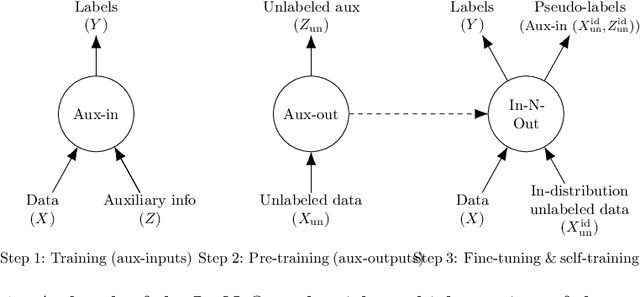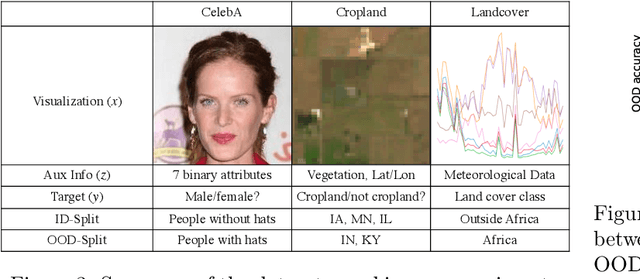In-N-Out: Pre-Training and Self-Training using Auxiliary Information for Out-of-Distribution Robustness
Paper and Code
Dec 16, 2020



Consider a prediction setting where a few inputs (e.g., satellite images) are expensively annotated with the prediction targets (e.g., crop types), and many inputs are cheaply annotated with auxiliary information (e.g., climate information). How should we best leverage this auxiliary information for the prediction task? Empirically across three image and time-series datasets, and theoretically in a multi-task linear regression setting, we show that (i) using auxiliary information as input features improves in-distribution error but can hurt out-of-distribution (OOD) error; while (ii) using auxiliary information as outputs of auxiliary tasks to pre-train a model improves OOD error. To get the best of both worlds, we introduce In-N-Out, which first trains a model with auxiliary inputs and uses it to pseudolabel all the in-distribution inputs, then pre-trains a model on OOD auxiliary outputs and fine-tunes this model with the pseudolabels (self-training). We show both theoretically and empirically that In-N-Out outperforms auxiliary inputs or outputs alone on both in-distribution and OOD error.
 Add to Chrome
Add to Chrome Add to Firefox
Add to Firefox Add to Edge
Add to Edge